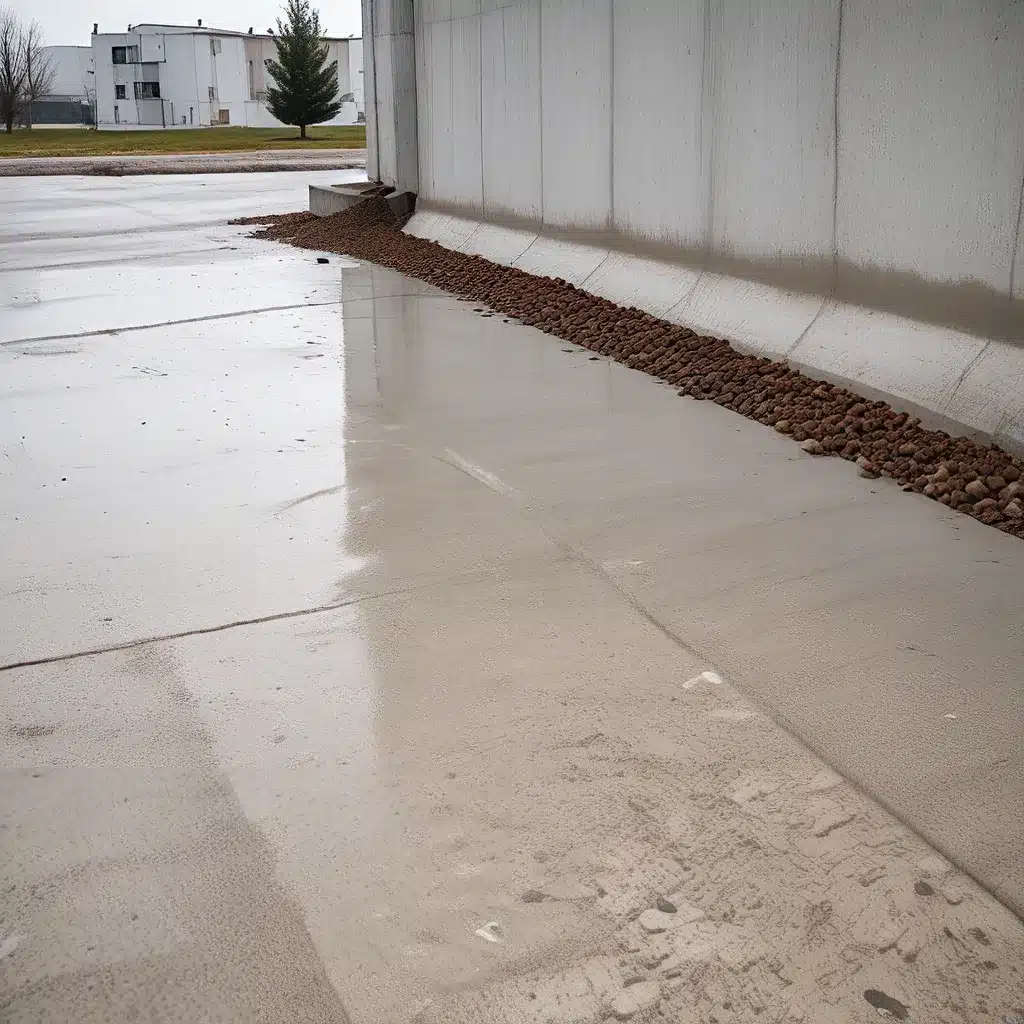
Concrete Conundrums: Conquering Winter’s Wrath
Ah, the joys of winter – the crisp, frosty air, the sparkling blankets of snow, and the… oh, who am I kidding? When it comes to concrete, winter is nothing short of a battlefield. As the mercury plummets and the ice creeps in, our beloved outdoor surfaces become a slippery, cracked, and battered mess. But fear not, my friends – with the right concrete admixtures and a bit of seasonal know-how, we can wage war against winter’s relentless assault and emerge victorious.
Unleashing the Power of Admixtures
Let’s start with the unsung heroes of concrete – the admixtures. These clever little additives are the secret weapons that can make all the difference when it comes to protecting your concrete from the ravages of winter. And let me tell you, these admixtures pack a punch.
Take, for instance, the humble fly ash. This pozzolanic wonder can work wonders for your concrete, reducing water demand, lowering heat of hydration, and even boosting long-term strength and durability. According to the Federal Highway Administration, fly ash can contribute to the formation of additional cementitious compounds, creating a stronger, more impermeable concrete that can better withstand the freeze-thaw cycles and salt-induced corrosion of the winter months.
But fly ash is just the tip of the iceberg. There’s also the mighty lithium silicate densifier, which can chemically react with the concrete to increase surface density and hardness, making it more resistant to the elements. And let’s not forget about the concrete-friendly de-icing salts, the ones that use acetate-based formulas to minimize the corrosive effects on your precious poured surfaces.
Seasonal Secrets for Concrete Survival
Of course, admixtures are only one part of the equation. To truly conquer winter’s wrath, we need to employ a holistic approach to concrete care. And that starts with proper preparation and maintenance.
As the experts at Earth Development suggest, one of the first lines of defense is a good old-fashioned concrete sealant. By applying a high-quality acrylic sealer before the first snowfall, you can create a protective barrier that keeps water, debris, and salt at bay. It’s like wrapping your concrete in a cozy winter coat, shielding it from the harsh realities of the season.
But the work doesn’t stop there. As the winter months drag on, it’s crucial to stay on top of snow and ice removal, making sure to promptly clear any accumulation before it has a chance to turn into a treacherous, salt-laden mess. And when it comes to clearing that snow and ice, the tools you choose can make all the difference. Opt for plastic or rubber shovels and plows, as metal ones can cause unsightly chips and cracks in your concrete.
Admixtures in Action: A Case Study
Now, I know what you’re thinking – “All of this sounds great, but how do these admixtures and seasonal strategies actually hold up in the real world?” Well, let me tell you about a little project I was involved with that really drove the point home.
It was a few winters ago, and we were tasked with renovating the concrete surfaces at a local shopping mall. The place was a winter wonderland, with snow and ice covering the parking lot and walkways like a frozen, slippery blanket. But we weren’t worried – we had a plan.
First, we started with a thorough cleaning and crack-filling process, using those concrete-friendly sealants to ensure a solid foundation. Then, we turned to the admixtures, incorporating fly ash and lithium silicate densifiers into the mix to boost the concrete’s resilience. And when it came time to clear the snow and ice, we made sure to use those plastic and rubber tools to protect the surface.
The results? Simply astounding. While the surrounding areas were quickly becoming riddled with cracks and spalling, our concrete surfaces remained steadfast and intact, withstanding the freeze-thaw cycles and salt exposure like champions. It was a testament to the power of admixtures and proper seasonal care.
Concrete Camaraderie: Teamwork for Triumph
Of course, I can’t take all the credit for this success story. The truth is, it takes a village to keep concrete happy and healthy, especially during the winter months. That’s why I always recommend partnering with the experts at Concrete RTownsville – they know these concrete conundrums inside and out, and they’re always ready to lend a hand (or a trowel) to ensure your outdoor surfaces are protected.
Because let’s be honest, when it comes to concrete care, we’re all in this together. Whether you’re a seasoned DIYer or a busy property manager, we’ve all got a stake in keeping our concrete strong, safe, and winter-ready. So why not join forces, embrace the power of admixtures, and give winter the old one-two punch it so rightly deserves?
After all, when it comes to conquering the concrete challenges of the season, the only thing that’s frozen should be your resolve. So let’s get out there, roll up our sleeves, and show Old Man Winter who’s boss. Your concrete is counting on you!
| Admixture | Benefits |
|---|---|
| Fly Ash | – Reduces water demand – Lowers heat of hydration – Boosts long-term strength and durability |
| Lithium Silicate Densifier | – Increases surface density and hardness – Enhances resistance to freeze-thaw cycles and salt-induced corrosion |
| Concrete-Friendly De-Icing Salts | – Uses acetate-based formulas to minimize corrosive effects on concrete |

